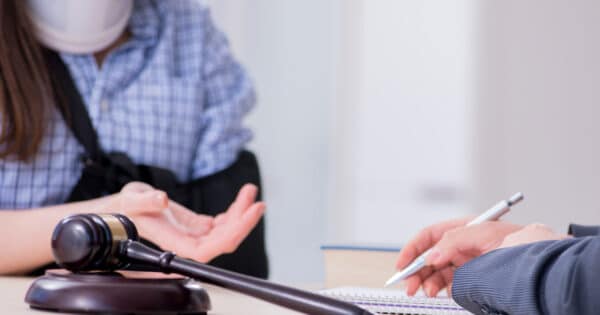In any personal injury claim, investigating negligence is a crucial phase for both parties when it comes to determining fault and ensuring a settlement for the affected party’s injuries. So what are the fundamentals of making a personal injury claim?
Starting the personal injury claim
At the start of making a personal injury claim, it is important to gather relevant evidence to support the case. This includes obtaining the injured parties medical records which detail the injuries they have sustained, any photos/videos of the accident and any police reports or witness statements taken at the scene.
If the injury was sustained as a result of a criminal act and at the time of instruction, there are ongoing criminal proceedings, it is helpful for us to attend these hearings. Whilst the criminal case is separate from a civil claim, attending these hearings are important evidence gathering exercise that would assist us with establishing negligence. For example, any findings or a guilty verdict in the criminal case, would strengthen the claimant’s civil claim in proving negligence or liability of the defendant.
Whilst on the surface, many people can recognise the fault in a negligent party’s actions and conclude that they are to blame, there are many situations where a defendant may very well deny liability and argue that they are not to blame for the injuries of an affected party. If this is the case, our investigation into liability will look at primarily the duty of care owed to the claimant and the causation of their injuries.
During the course of making a personal injury claim
During the course of a typical personal injury claim, there are several elements to investigating negligence. Establishing that the defendant owed a duty of care is an essential basis of a personal injury claim. The leading case that established this concept was Donoghue v Stevenson [1932] AC 562 which stated that individuals, employers, and other entities owe a duty to take reasonable care to avoid causing harm to others that could be reasonably foreseen as being affected by their actions or omissions.
If it is shown that the defendant breached their duty of care, then it is critical that we establish causation. This connects the defendants breach of duty with the injuries and the losses that the claimant had sustained. The test for this used in English law is the “but for” approach. This looks at whether “but for” the defendants actions/omissions, the injury/loss of the claimant would have occurred. In order to build this narrative, we may need to obtain evidence from independent medico legal experts and experts that deal with liability, i.e., accident reconstruction experts.
What are the factors that can impact causation
There are many factors that can impact causation; however, the most common factors are contributory negligence and pre-existing medical conditions.
Contributory Negligence
In some circumstances, the claimant may have acted in a way that also contributed to the injuries they had sustained. For example, if they were not wearing a seatbelt at the time of the accident. This concept is called contributory negligence and if it is shown that the claimant was partially responsible for their own injuries, they would take a portion of the blame and this would result in their compensation being deducted to reflect their responsibility for their injuries. For example, if the claimant was 25% responsible for their injuries, their compensation would be reduced by 25%.
Pre-existing medical conditions
When we obtain the claimant’s medical records, we also obtain their pre-accident medical records. This will help us establish whether they have any pre-existing conditions that may have been worsened by or contributed to the injury. Whilst this does make establishing causation more complex, they do not necessarily excuse the defendant of liability as there is a rule under English Law called the “eggshell skull” rule in which the defendant is liable for the full extent of the harm caused to the claimant, even if they are made worse by a pre-existing condition.
Settling the personal injury claim
Once we have established that the defendant owed a duty of care to the claimant and “but for” their actions/omissions, the claimant sustained injuries and losses, we can then engage in negotiations with the defendants to settle the claim. If an adequate settlement cannot be reached, then will continue to proceed with the litigation until we reach trial.
How can Moore Barlow help
At Moore Barlow, we understand the fundamentals of making a personal injury claim. Our knowledgeable lawyers, are experienced at providing you with the legal help and support you need to secure the best possible outcome for your Personal Injury claim.
To have a free, no obligation, consultation and discuss your claim with one of our brain injury specialists, please call on 0800 157 7611 or contact our Personal injury team online.







